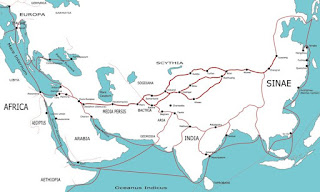
Mountains and Valleys Sotah 33 and 37 Before we delve into the geographic puzzles of Gittin, a few last words on Sotah. In the seventh chapter we have a comprehensive discussion of the blessings and curses given on Mt. Gerizim and Mt. Ebal. This is in the context of what must be recited in Hebrew and what can be said in any language. The mishnah explains the procedure for giving the blessings and curses and expounds on the verse in Devarim 11 that explains how to get to the mountains: ארץ הכנעני הישב בערבהמול הגלגל אצל אלוני מרה הלא המה בעבר הירדן אחרי דרך מבוא השמש Both are on the other side of the Jordan, beyond the west road that is in the land of the Canaanites who dwell in the Arabah – near Gilgal, by the terebinths of Moreh. (JPS trans.) There are many details in that verse, not all of them fitting together. The Gemara discusses whether מבוא השמש means east or west, connects the story to Abraham who goes to Elon Moreh and brings in the Samaritans who i...








